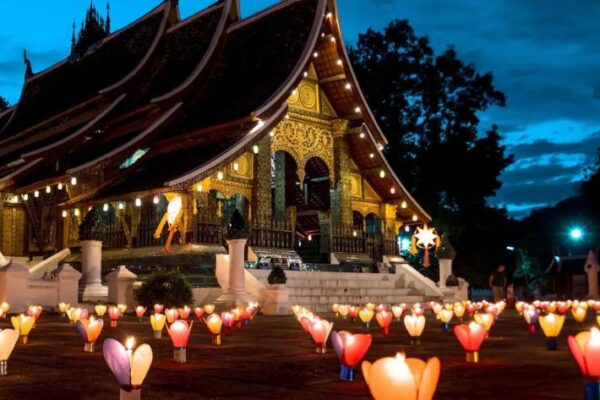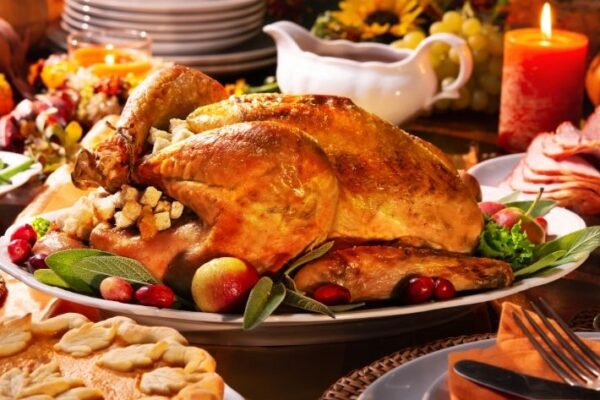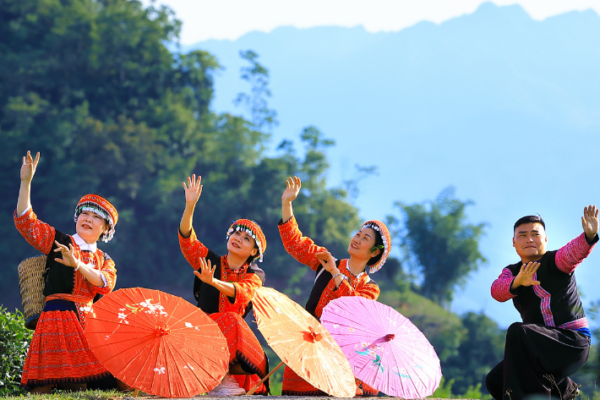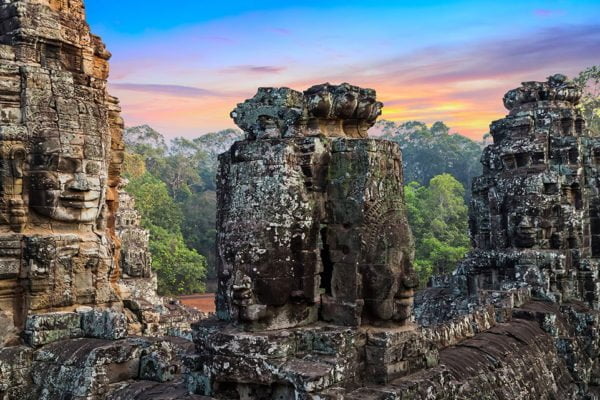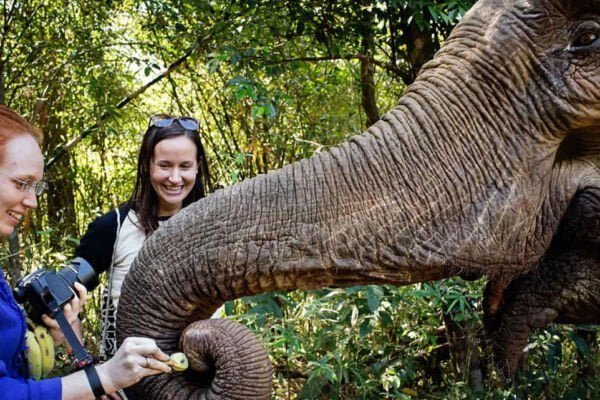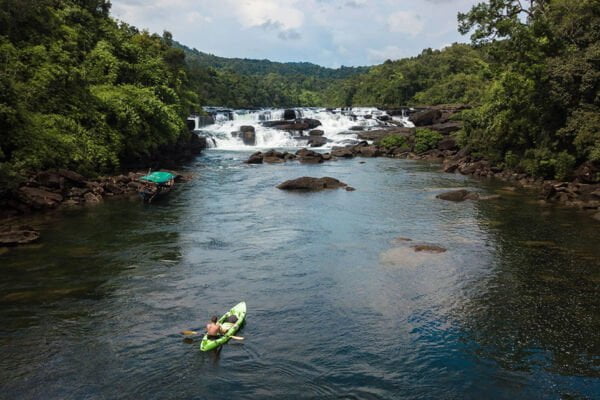When Culture Comes Alive: Best Cambodia Festivals For Travelers To Explore
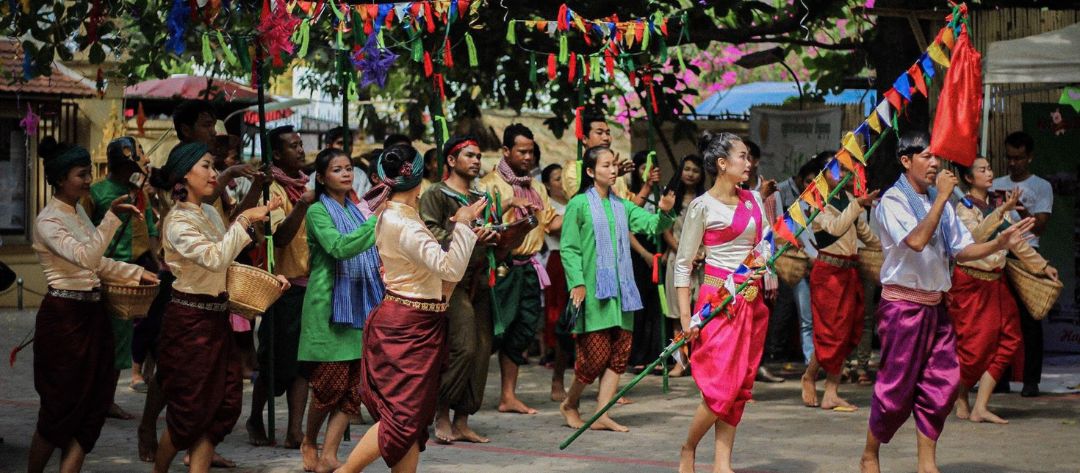
Cambodia lights up throughout the year with colorful festivals that blend ancient traditions and modern joy. These celebrations fill streets, rivers, and temples with music, dance, and heartfelt rituals. As wandering through towns draped in lanterns or watch boat races under the sun, travelers feel the deep connection Cambodians have to their culture. Festivals here welcome visitors with open arms and an abundance of local flavor.
In this guide, we uncover the best Cambodia festivals worth planning your trip around so you can truly experience the magic and energy that make Cambodia unforgettable.
Top 10 Cambodia Festivals You Should Experience
Cambodia is home to a rich tapestry of festivals that celebrate its vibrant culture, deep spirituality, and centuries-old traditions. Here are the top 10 festivals in Cambodia you should experience to truly understand the heart of this fascinating country.
Cambodian Independence Day
Celebrated every year on November 9th, Cambodian Independence Day marks the country’s liberation from 90 years of French colonial rule. It is a proud and emotional day for many Cambodians, filled with remembrance, celebration, and national pride.
The main festivities take place in Phnom Penh, particularly around the Independence Monument. The King of Cambodia typically presides over the official ceremony, which includes a formal gathering of government officials, military units, students, and citizens. Later in the evening, fireworks light up the city skyline, and cultural performances take place in public spaces.
This is a meaningful day not only politically, but also spiritually, as many Cambodians take the time to reflect on the struggles of the past and appreciate the peace they enjoy today.
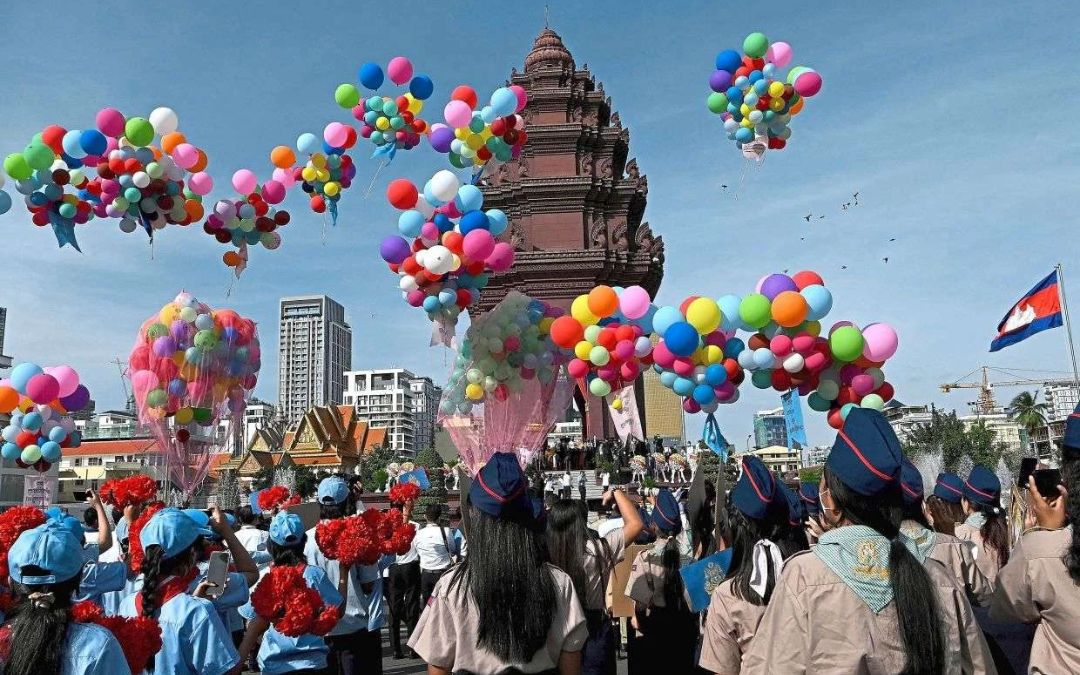
Colorful balloons rise as Cambodians celebrate Independence Day with pride.
Travel tip:
- Arrive early to find a good viewing spot near the Independence Monument
- Book accommodations in advance, as locals from all provinces flock to the capital
- Expect road closures and heavy crowds around central Phnom Penh during the evening
Cultural note: Independence Day is a time to honor past sacrifices and national unity. While modern celebrations feel festive, the day also serves as a reminder of Cambodia’s journey toward self-governance and the lasting legacy of resilience.
Khmer New Year (Chaul Chnam Thmey)
Khmer New Year is one of the most important and joyous Cambodia festivals, celebrated in mid-April to mark the end of the harvest season and the start of a new year. Lasting three days, it’s a time for family reunions, temple visits, and colorful traditions that bring the whole country to life.
The biggest celebrations happen in Phnom Penh and Siem Reap, though many locals return to their home provinces. Streets empty out, but pagodas and village squares become lively with games, dances, and spiritual rituals. Water fights break out in public spaces, symbolizing purification and washing away bad luck.
For Cambodians, this festival blends deep religious meaning with fun and community spirit, making it a must-see for travelers.
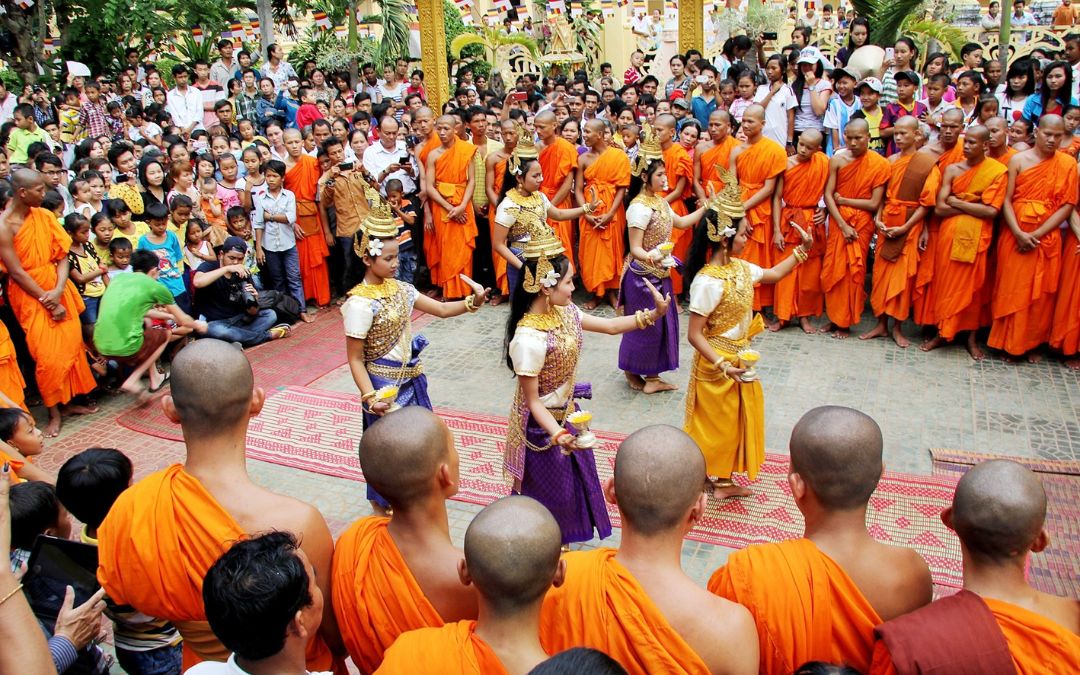
Chaul Chnam Thmey brings joy as dancers perform for monks and gathered crowds.
Travel tip:
- Plan to join locals in a village for an authentic experience
- Expect many businesses to close, and cities to feel quiet during the day
- Bring waterproof bags to protect your belongings during the water celebrations
Cultural note: Khmer New Year is about cleansing the past, showing respect to elders, and starting fresh. Water and sand hold special significance, representing blessings, purification, and good fortune for the year ahead.
Royal Ploughing Ceremony (Bon Chroat Preah Nongkoal)
Held annually in May, the Royal Ploughing Ceremony marks the beginning of Cambodia’s rice-planting season. This ancient ritual blends royal tradition, spiritual belief, and agricultural forecasting into one symbolic event.
The ceremony usually takes place in Phnom Penh, often outside the Royal Palace. Sacred oxen, led by a royal representative, plow a ceremonial field before being presented with offerings such as rice, corn, grass, water, and alcohol.
The oxen’s choices are believed to predict the coming year’s agricultural outcomes, a tradition rooted in both Buddhism and animist customs. Though formal, the event draws large crowds and is also broadcast on national television.
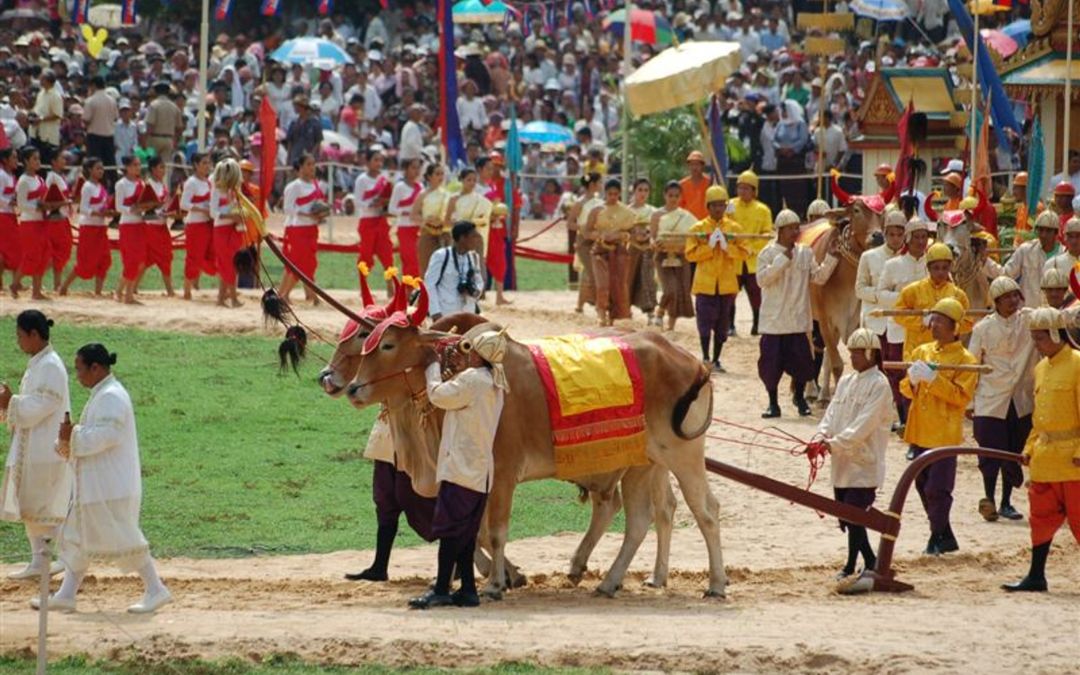
Sacred oxen plow fields as Bon Chroat Preah Nongkoal signals the planting season.
Travel tip:
- Visit Phnom Penh a few days early to explore the city before the ceremony
- Arrive at the ceremonial field early to find a good viewing spot
- Dress modestly, as this is a royal and religious event
Cultural note: While some locals view the predictions with skepticism, the ceremony remains an important cultural touchstone. It honors Cambodia’s deep connection to rice farming and reflects the kingdom’s respect for royal traditions.
King Norodom Sihamoni’s Birthday
Every year in mid-May, Cambodia celebrates the birthday of King Norodom Sihamoni with a three-day national holiday. Streets in Phnom Penh and other cities are adorned with colorful flags, portraits of the King, and decorative lights, creating a festive yet respectful atmosphere.
Although official ceremonies are reserved for dignitaries, the public joins in the celebration with fireworks, music, and visits to pagodas to pray for the King’s health and longevity. Many locals spend the holiday relaxing with family and enjoying special meals together. It’s a meaningful time that reflects the monarchy’s role as a unifying figure for the nation, blending pride and reverence.
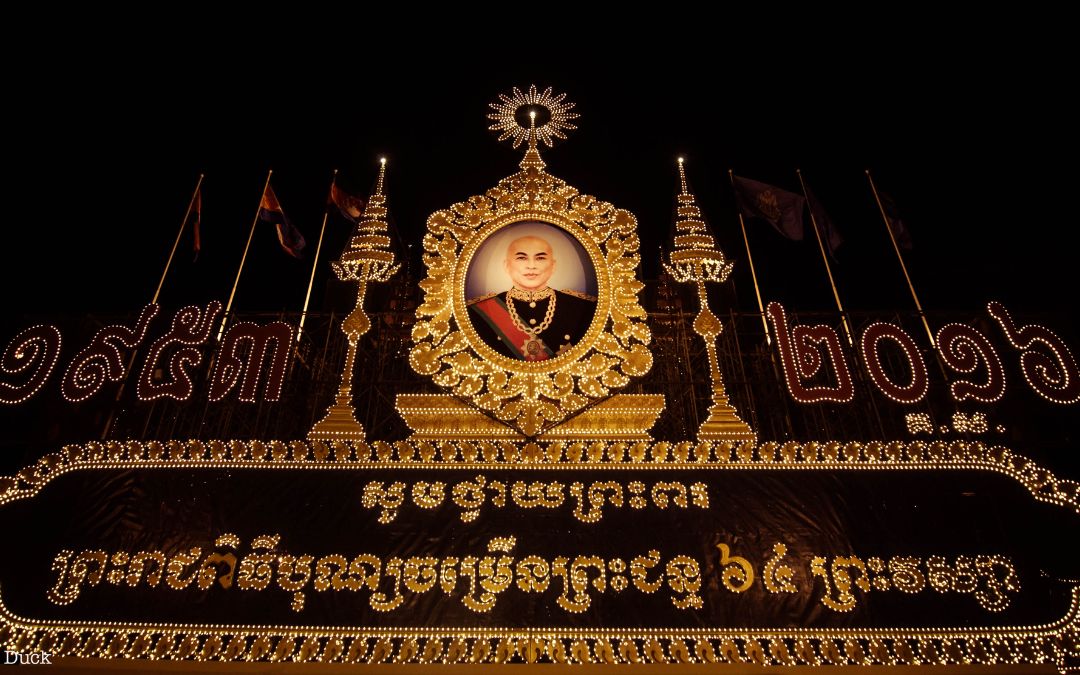
King Sihamoni’s birthday brings joy as Cambodians celebrate with glowing lights.
Travel tip:
- Take advantage of quieter streets to explore Phnom Penh’s landmarks
- Evenings offer the best chance to see fireworks and light displays
- Be mindful of closures, as government offices and some businesses may not operate normally
Cultural note: This holiday reinforces the strong connection between the Cambodian people and their King, serving as a moment of national gratitude and respect.
Pchum Ben (Ancestor’s Day)
Pchum Ben, also called the Festival of the Dead, is among the most profound Cambodian festivals, held over fifteen days in September or October. During this time, Cambodians honor their ancestors by visiting temples and offering food to monks.
The final three days are the most important, with families gathering at pagodas to perform rituals believed to bring peace to the souls of up to seven generations of ancestors. It’s a profoundly spiritual period when the living and the dead are thought to reconnect. Temples become lively with prayers, chanting, and offerings, while homes are filled with traditional foods and family gatherings.
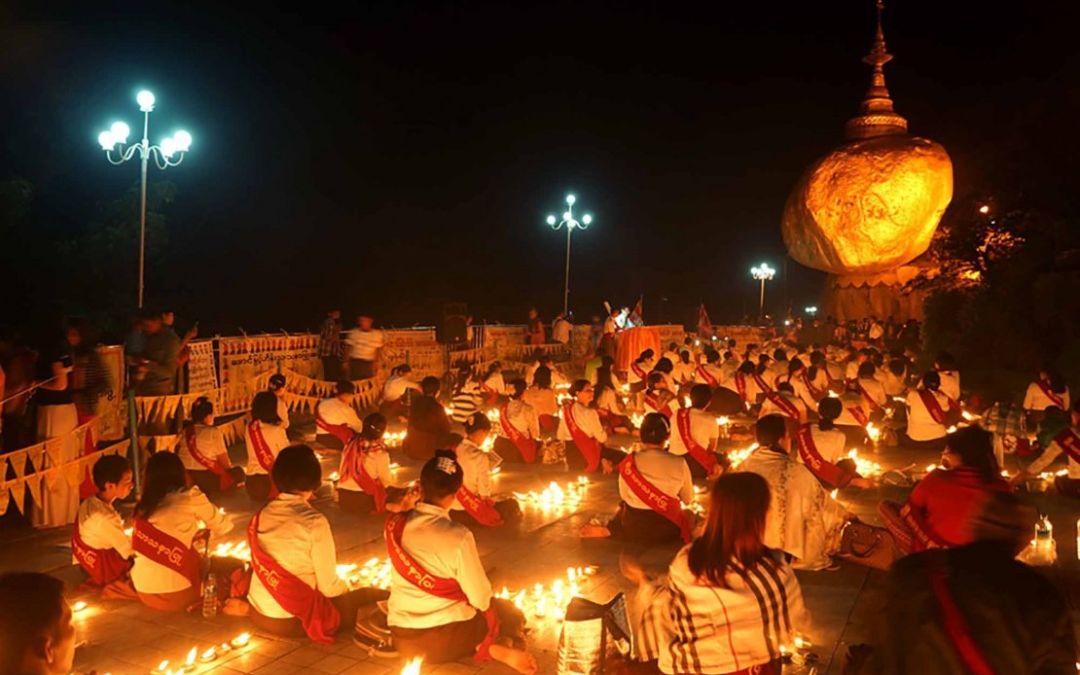
Families light candles and pray for ancestors as Pchum Ben brings reflection.
Travel tip:
- Visit a pagoda during the last three days to witness the most meaningful ceremonies
- Dress respectfully and observe quietly during prayers and rituals
- Take the opportunity to try local ceremonial foods offered at temple gatherings
Cultural note: Pchum Ben highlights Cambodia’s strong emphasis on family bonds and respect for the departed, blending Buddhist beliefs with ancient spiritual traditions.
>> Read More: Best Time To Visit Cambodia
Meak Bochea (Magha Puja Day)
One of Cambodia’s most sacred Buddhist holidays, Meak Bochea takes place on the full moon of the third lunar month, usually in February. This festival commemorates the spontaneous gathering of 1,250 enlightened monks to hear Buddha’s teachings more than 2,500 years ago.
In the morning, monks and laypeople gather at temples for prayer and meditation. As evening falls, devotees light candles, carry incense, and circle the main shrine three times in a quiet, beautiful ceremony symbolizing respect for the Buddha, his teachings, and the monastic community.
The mood is serene yet powerful, with temples illuminated under the full moon, drawing both worshippers and curious visitors into its gentle rhythm.
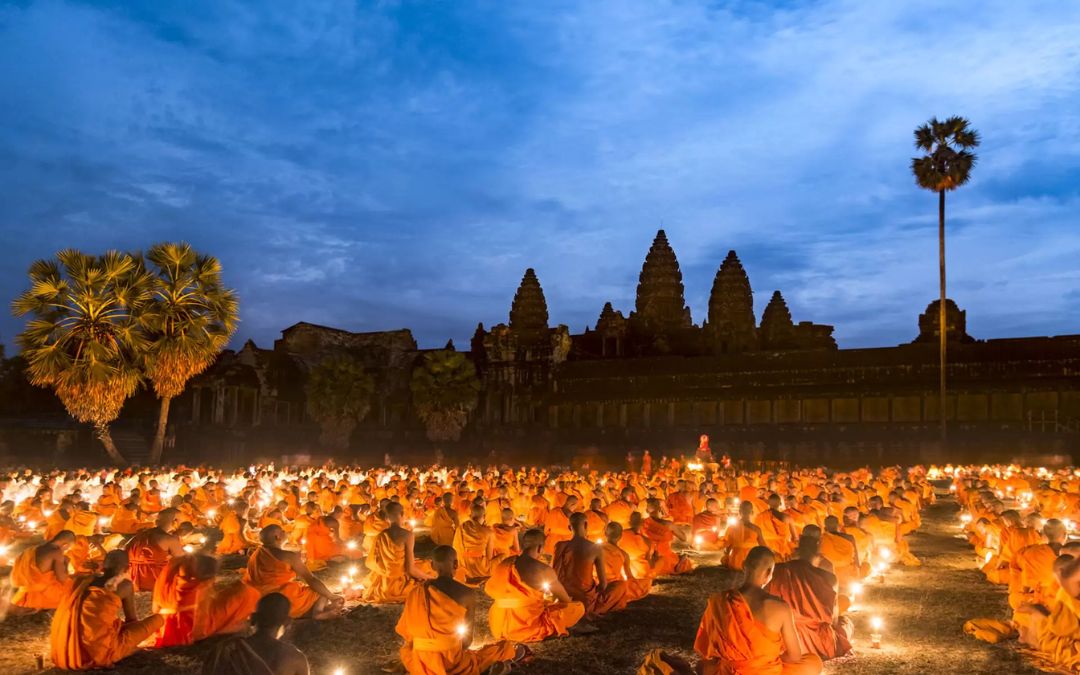
Buddha’s teachings inspire monks as Meak Bochea glows with candlelit devotion.
Travel tip:
- Visit a major temple in Phnom Penh or Siem Reap after sunset for the most atmospheric experience
- Bring a small offering of flowers or incense to participate respectfully
- Avoid loud conversations or intrusive photography during the candle procession
Cultural note: Meak Bochea encourages moral reflection, unity, and mindfulness. It serves as a time for Cambodians to renew their spiritual practice and strengthen their connection to Buddhist principles.
Water Festival (Bon Om Touk)
Every November, the Water Festival marks the dramatic reversal of the Tonle Sap River’s flow. Lasting three days, it is one of the largest and liveliest celebrations of the year.
The most spectacular events unfold along the Mekong River in Phnom Penh. Colorfully decorated longboats compete in thrilling races watched by huge crowds, while the evenings explode with fireworks, floating lanterns, and illuminated barges gliding across the water.
People gather along the riverbanks to cheer, feast, and revel in the carnival-like atmosphere. Streets are packed, and the energy is contagious as music and cheers echo late into the night.
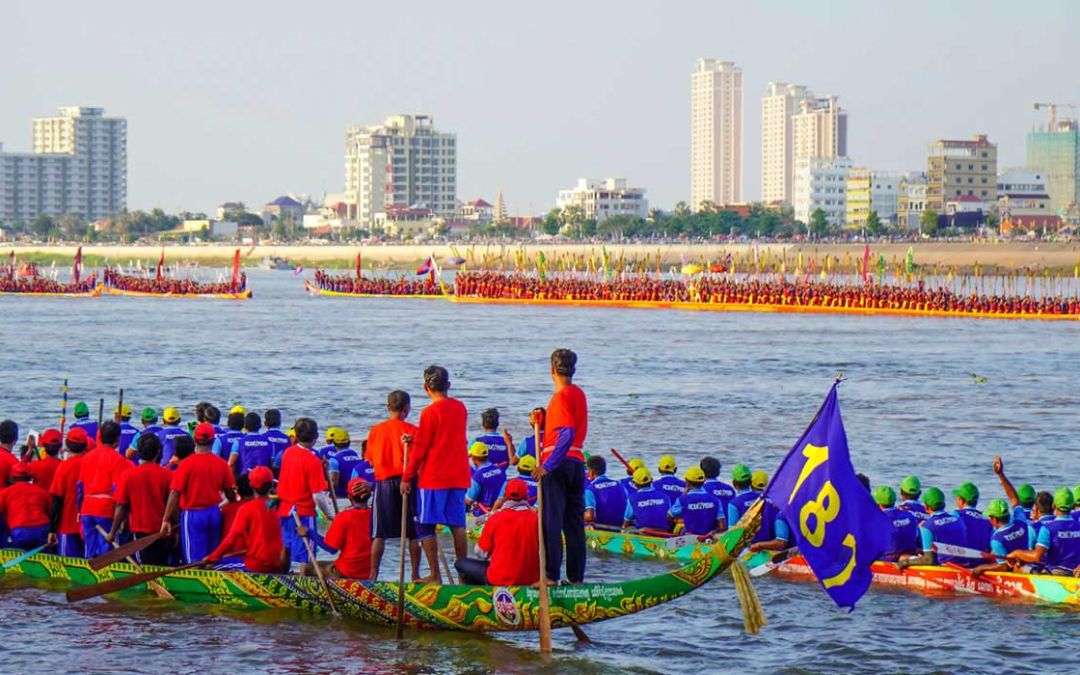
Bon Om Touk thrills crowds as longboats race along the river in festive cheer.
Travel tip:
- Arrive early to secure a riverside spot for the boat races
- Expect heavy traffic and road closures around Phnom Penh during the festival
- Book your accommodations weeks in advance, as the city fills with visitors
Cultural note: The Water Festival honors the importance of water to Cambodia’s life and history, while also paying tribute to the naval forces of the ancient Khmer Empire.
Vesak Bochea
Vesak Bochea is one of the most significant Cambodia festivals, celebrated on the full moon of the fourth Buddhist month, usually in April or May. This sacred day commemorates three major events in Buddha’s life – his birth, enlightenment, and passing into nirvana – making it deeply revered by Cambodians.
Throughout the day, devotees visit temples to pray, light candles, and make offerings to monks. Evening processions are especially moving, with worshippers circling shrines three times while carrying incense, flowers, and candles. The atmosphere is calm, respectful, and filled with quiet devotion. It is a time for reflection and reinforcing Buddhist values of compassion and peace, observed by communities across the country.
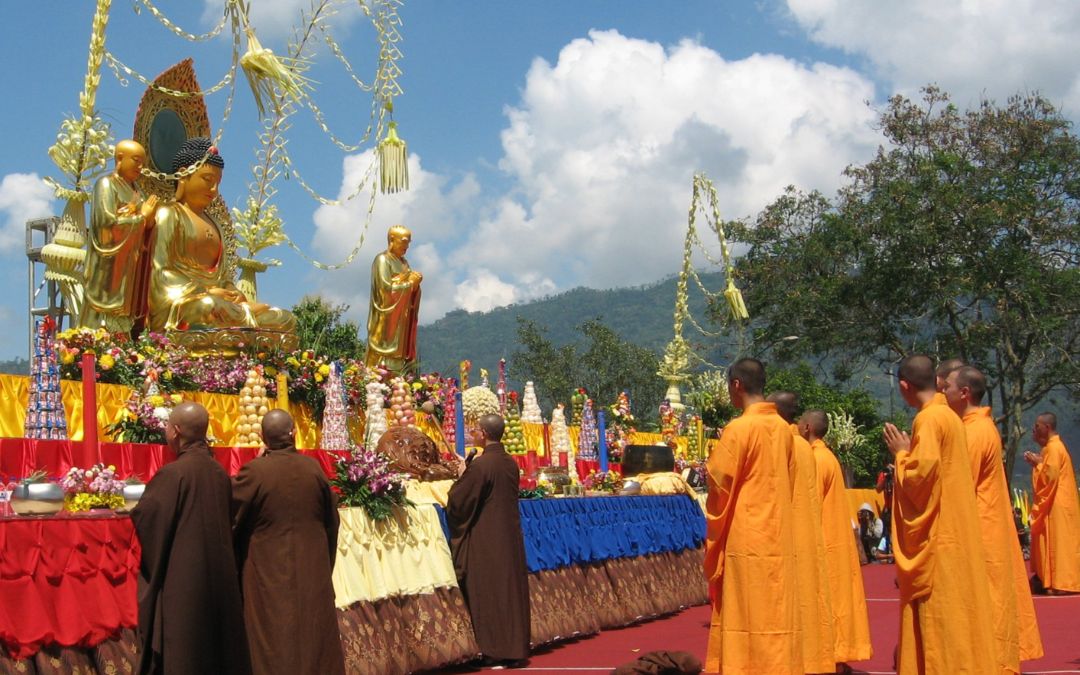
Monks gather in prayer as Vesak Bochea honors Buddha’s life and teachings.
Travel tip:
- Join an evening procession at a large temple to feel the spiritual atmosphere
- Wear modest clothing and bring a small offering if you wish to participate
- Keep your voice low and avoid obstructing worshippers during ceremonies
Cultural note: This day reminds Cambodians of the moral and spiritual principles at the heart of their faith and encourages mindfulness and harmony in everyday life.
Angkor Festival
Held every January at the magnificent Angkor Wat, the Angkor Festival is a celebration of Cambodian art, dance, and heritage. With the ancient temple as a backdrop, the event showcases everything from traditional Apsara dancing and shadow puppetry to contemporary performances by artists from across Asia.
The performances tell ancient stories through elegant movements and colorful costumes, creating an unforgettable cultural experience. Dignitaries and sometimes even the King attend, adding a regal air to the festivities. For visitors, it’s a rare opportunity to witness Cambodia’s artistic traditions brought to life in one of the world’s most iconic settings.
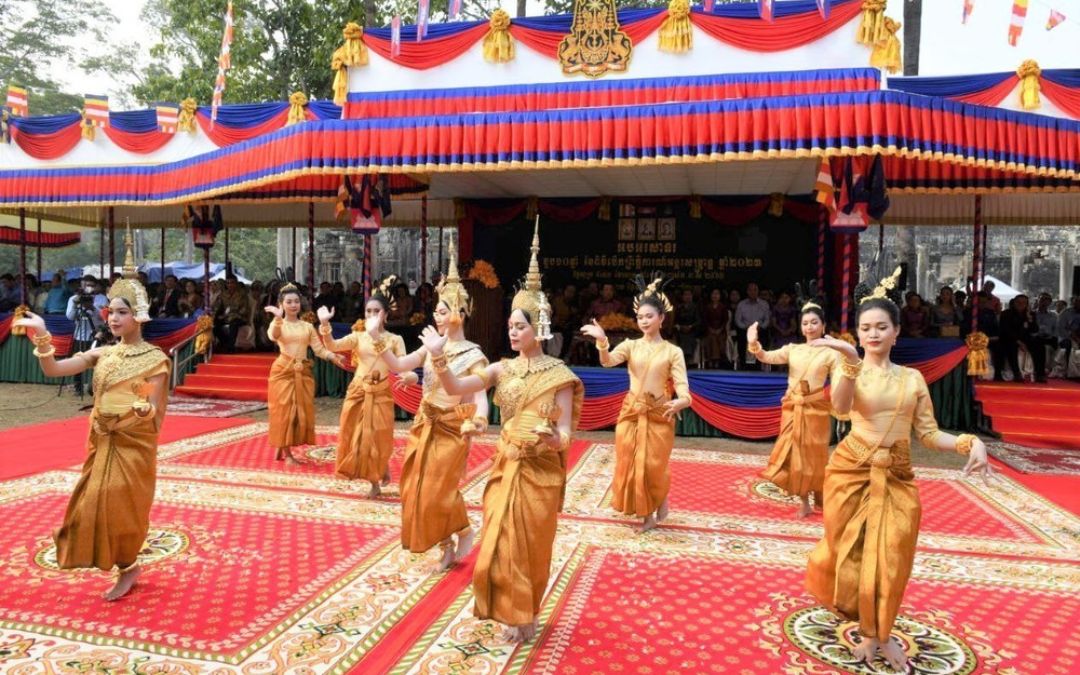
Dancers perform gracefully as the Angkor Festival celebrates Cambodian heritage.
Travel tip:
- Arrive early to find a good seat and enjoy the pre-show atmosphere at Angkor Wat
- Bring water and a light jacket, as evenings can get cool in January
- Respect the performers and avoid using flash photography during shows
Cultural note: The Angkor Festival celebrates the country’s rich artistic spirit, showcasing how Cambodia’s cultural identity remains vibrant and deeply connected to its ancient heritage.
>> Read More: Angkor Complex – Travel Guide To Explore The Most Majestic Site of Cambodia
Sea Festival
The Sea Festival is a lively annual event celebrating Cambodia’s beautiful coastline and coastal culture, typically held in December or January. The host city rotates each year among Sihanoukville, Kep, and Kampot, with each destination adding its own charm to the festivities.
This festival combines sports, music, and food in an energetic, beachside atmosphere. Visitors can watch or join in water sports like boat racing, jet skiing, and swimming. There are also seafood fairs, traditional Khmer dance performances, martial arts displays, and even a half-marathon along the coast. The celebrations stretch from sunrise to late evening, drawing both locals and tourists.
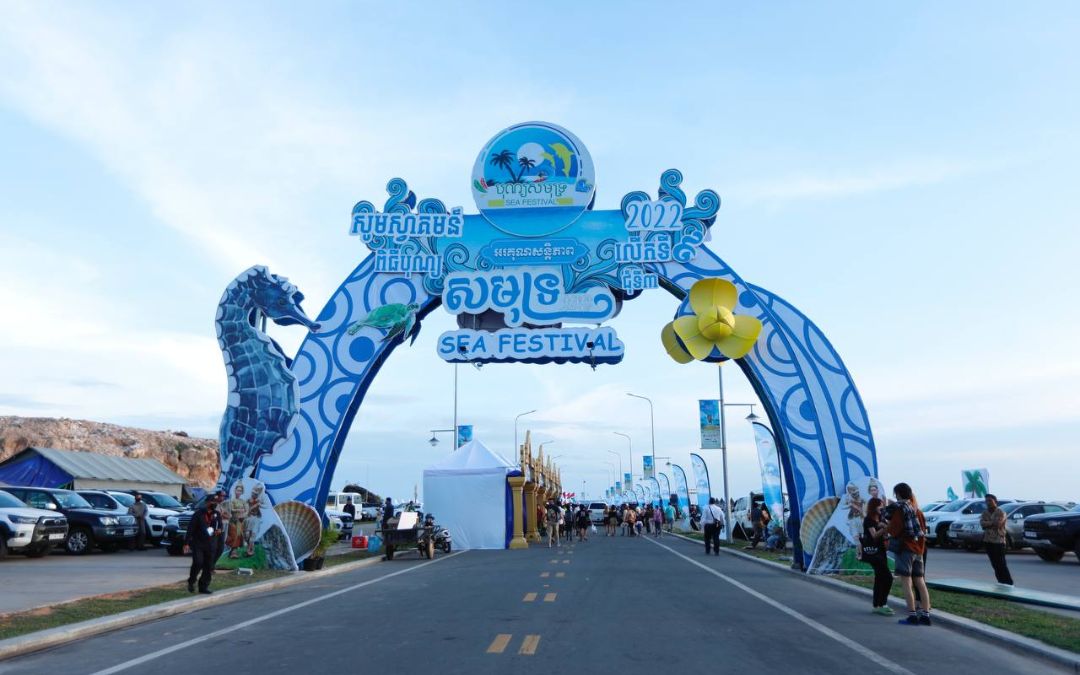
Sea Festival welcomes crowds as Cambodia celebrates its vibrant coastal culture.
Travel tip:
- Book accommodations early, as rooms in the host city fill quickly during the festival
- Arrive early at the beach to secure a good spot for watching the competitions
- Bring sunscreen, a hat, and plenty of water to stay comfortable throughout the day
Cultural note: The Sea Festival showcases the natural beauty and culture of Cambodia’s coastal regions. It also promotes environmental awareness and sustainable tourism practices, reflecting the country’s pride in its maritime heritage.
How to Plan Your Cambodia Trip Around the Country’s Most Iconic Festivals
Attending a Cambodia festival is one of the most enriching ways to experience the country’s spiritual roots, community spirit, and cultural pride. Since most follow the Khmer lunar calendar, careful preparation will help you navigate both the joyful crowds and solemn rituals with ease. Here’s how to plan your festival adventure wisely.
What to Pack
Packing appropriately is essential when joining Cambodian festivals, which often involve visits to temples, processions, or outdoor gatherings under intense sun or sudden rain.
- Modest clothing for temple visits: Bring light, breathable clothing that covers your shoulders and knees. Avoid sleeveless tops, shorts, or tight skirts. Many temples require respectful attire for both men and women.
- Sandals or quick-drying footwear: At many sacred sites, you’ll be asked to remove your shoes. Easy-to-slip-on sandals or water-resistant footwear are ideal, especially if paths are wet or muddy.
- A scarf or shawl: A lightweight scarf serves multiple purposes. Use it to cover your shoulders at temples or wrap it around your waist if needed. It’s a practical, respectful accessory to carry.
- Water bottle: Stay hydrated by bringing a refillable bottle. Be sure to drink only bottled or purified water to avoid any risk of waterborne illness.
Festival Etiquette
Most Cambodian festivals are spiritual and family-centered, requiring visitors to observe local customs with sensitivity and respect.
- Respect rituals: Whether witnessing monks chant at Meak Bochea or families offer food during Pchum Ben, keep your distance, lower your voice, and never interrupt the ceremony.
- Ask before taking photos: Not all moments are appropriate for photography. Always ask before photographing individuals, especially monks or people in prayer. Temples are sacred spaces, not tourist backdrops.
- Participate with sensitivity: Many locals welcome foreigners to observe or join certain activities. Do so respectfully, mirror local behavior, and accept offerings or blessings with grace and gratitude.
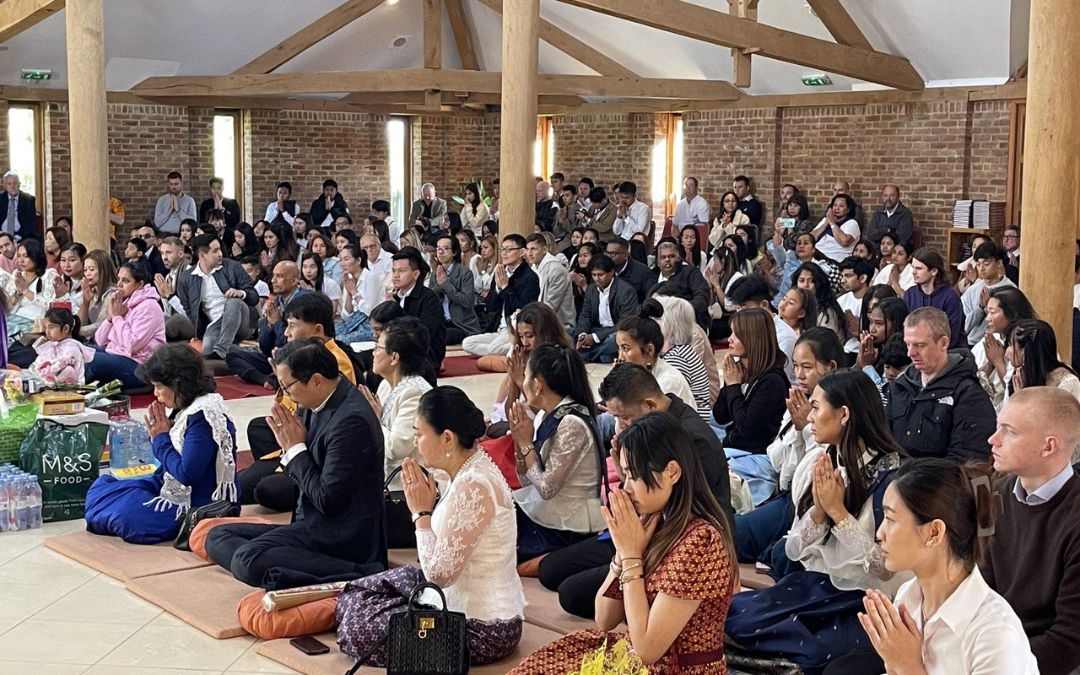
Worshippers honor rituals in silence, showing deep respect for sacred traditions
Local Transport & Crowds
Festivals in Cambodia can dramatically change the way you move around cities or between destinations. Planning ahead will save you stress.
- Tuk-tuks vs. Taxis: While not officially stated in sources, tuk-tuks are usually more flexible in crowded areas and easier to hail than taxis during festival days. Negotiate your fare beforehand.
- Street closures and delays: Expect heavy congestion and road closures, especially during Khmer New Year or the Water Festival in Phnom Penh. Public squares and riverside roads may be blocked.
- Plan extra travel time: Whether moving across town or heading to a nearby province, budget extra hours for transportation. Some services may run slower or stop altogether during peak festivities.
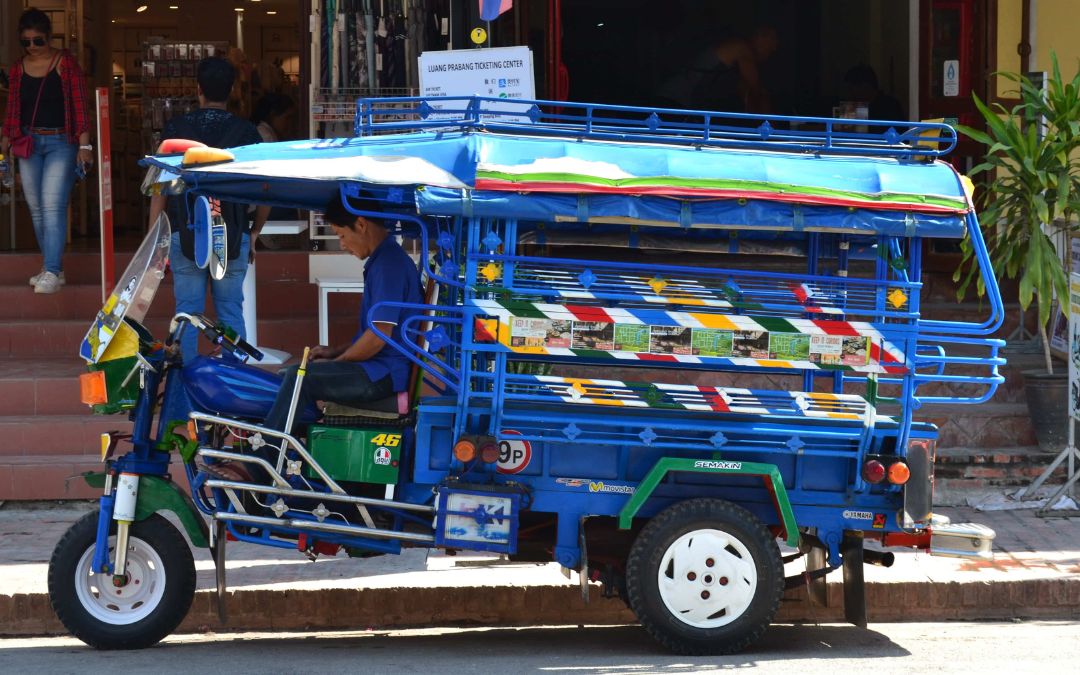
Cambodia’s festive city streets become easier to navigate with local tuk-tuks.
Tips for a Smooth Festival Experience
Festival season in Cambodia offers unforgettable moments — but only if you’re prepared. These essential tips will help you make the most of your journey.
- Book in advance: Hotels, guesthouses, and transport services fill up quickly during major festivals like the Khmer New Year. Reserve early, especially if you plan to stay in Phnom Penh or Siem Reap.
- Learn basic Khmer phrases: A few local words go a long way. “Sua s’dei” means Hello, “Orkun” means Thank you, and “Som toh” means Sorry or Excuse me — helpful during close community interactions.
- Stay hydrated and sun-protected: Cambodian weather can be hot and humid, even during cooler months. Use sunscreen, wear a hat, and bring sunglasses. Drink only safe, bottled or purified water throughout the day.
Ideal Itinerary For 10 Festive Days in Cambodia
This ideal 10-day Cambodia festival-inspired itinerary blends history, spirituality, culture, and relaxation. It’s perfect for travelers who want to experience the country’s rich heritage and vibrant traditions while exploring its iconic sights and serene landscapes.
Day 1: Arrival in Siem Reap
- Land in Siem Reap, meet your guide, and settle into your hotel. If time allows, visit the Angkor National Museum for an excellent introduction to Khmer history and architecture.
- Enjoy a welcome dinner at a social enterprise restaurant supporting local youth.
Day 2: Angkor Temples Exploration
- Start early at Ta Prohm, then tour Angkor Thom’s majestic South Gate, Bayon Temple, and Terrace of Elephants.
- After lunch, visit Banteay Kdei and Sra Srang before taking a peaceful sunset gondola ride around Angkor Thom’s moat.
Day 3: Sunrise at Angkor Wat & Countryside
- Witness sunrise at Angkor Wat, then explore its intricate carvings and towering architecture.
- Continue to Banteay Srey, the pink sandstone “Citadel of Women,” and trek to Kbal Spean’s river carvings and waterfall before returning to Siem Reap.
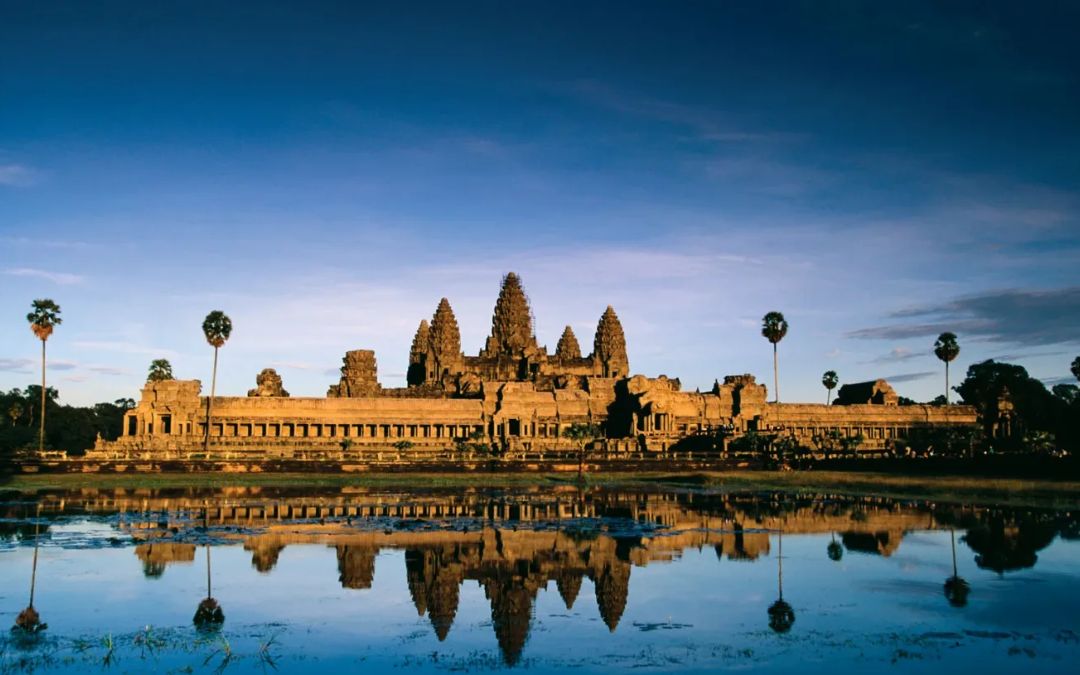
Angkor Wat greets early risers with golden light and awe-inspiring reflection.
>> Read More: An Easy Guide On Planning Your Angkor Wat Tour
Day 4: Khmer Arts & Food Tour
- Visit Artisans d’Angkor to see traditional crafts and Puok’s Silk Farm to learn about weaving.
- Enjoy a relaxing afternoon, then embark on an evening tuk-tuk street food tour, sampling Khmer delicacies and soaking in the lively night atmosphere.
Day 5: Boat to Battambang
- Take a scenic boat trip across Tonlé Sap Lake to Battambang, passing floating villages and wetlands.
- Explore local villages producing rice paper and other Khmer treats, then enjoy an evening circus performance at Phare Ponleu Selpak.
Day 6: Battambang Discovery
- Cycle through markets, heritage houses, and pagodas, crossing the Sangke River on a local boat.
- Ride the unique Bamboo Train and visit Phnom Sampeau hilltop temple for breathtaking views of the surrounding plains.
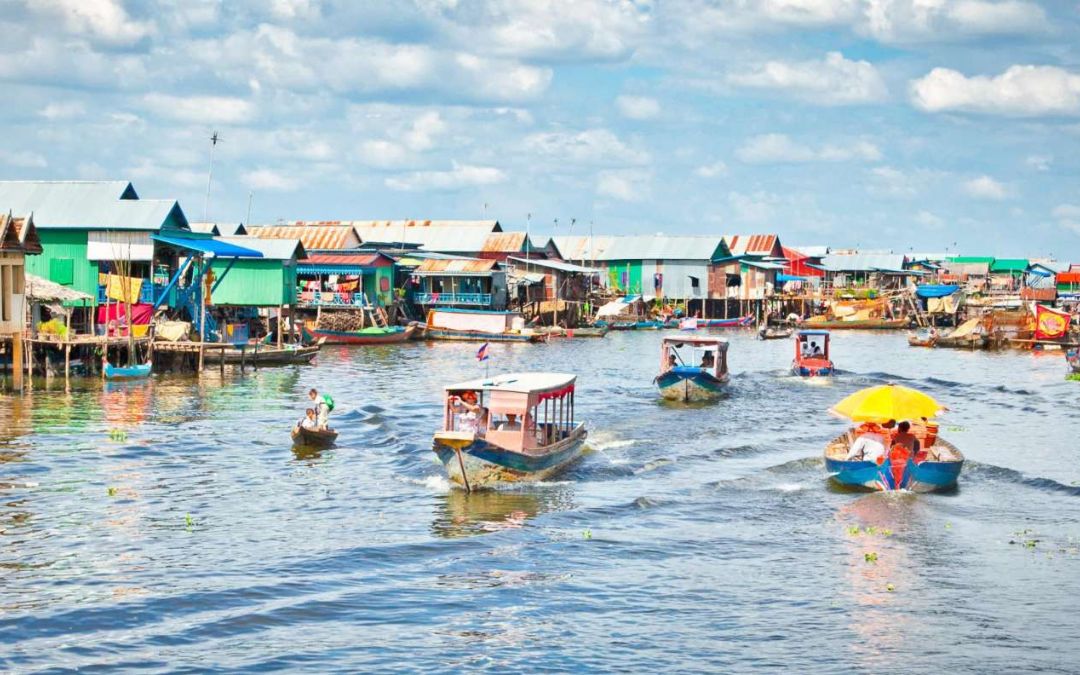
Boats glide across Tonlé Sap as villagers live atop the shimmering water.
>> Read More: Discover Battambang – Cambodia’s Serene and Charming Town
Day 7: Battambang to Phnom Penh via Oudong
- Drive to Phnom Penh, stopping at Kampong Chhnang’s pottery village and Oudong Mountain for panoramic views.
- Visit the Vipassana Dhura Meditation Centre before arriving in Phnom Penh to relax and explore the riverside.
Day 8: Phnom Penh Heritage Tour
- Explore the Royal Palace, Silver Pagoda, and National Museum by cyclo.
- Learn about Cambodia’s tragic history at Tuol Sleng Genocide Museum and the Killing Fields before shopping at the Russian Market and visiting Wat Phnom at sunset.
Day 9: Silk Island & Nightlife
- Visit Koh Oknha Tey (Silk Island) to witness traditional weaving and enjoy local hospitality.
- In the evening, take a foodie tuk-tuk tour around Phnom Penh, tasting Khmer cuisine and enjoying a drink at a rooftop bar overlooking the city.
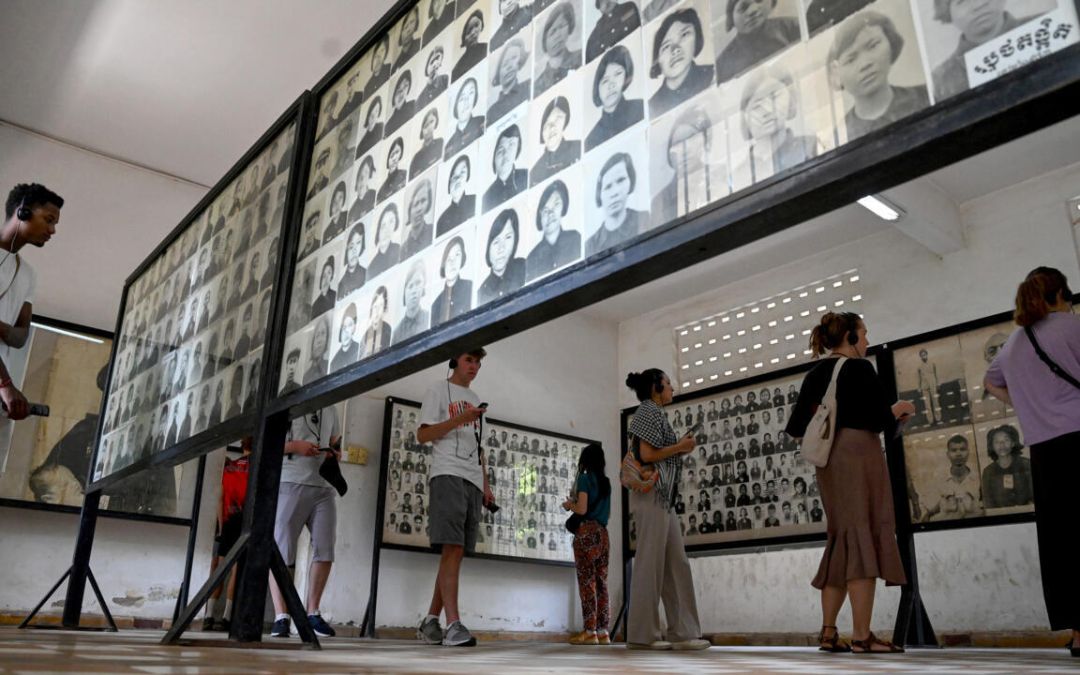
Visitors reflect on haunting memories inside the Tuol Sleng Genocide Museum.
Day 10: Beach Escape to Koh Rong
- Travel to Sihanoukville and ferry to Koh Rong Samloem, an untouched tropical island paradise.
- Spend your afternoon relaxing on white sand beaches and swimming in turquoise waters, which is the perfect way to end your journey.
>> See Tour: The Very Best Cambodia Tour
Celebrate Culture Through Every Step
Exploring Cambodia during its most meaningful festivals allows you to witness ancient traditions, spiritual depth, and warm hospitality in their most authentic form. Each Cambodia festival offers a deeper understanding of the country’s values and vibrant way of life, far beyond temples and tuk-tuks.
If you’re ready to experience the magic of Cambodia’s festivals, Asia Pioneer Travel is here to create a personalized itinerary for you. Let us guide you through this unforgettable journey and help you connect with Cambodia’s rich cultural heritage.
